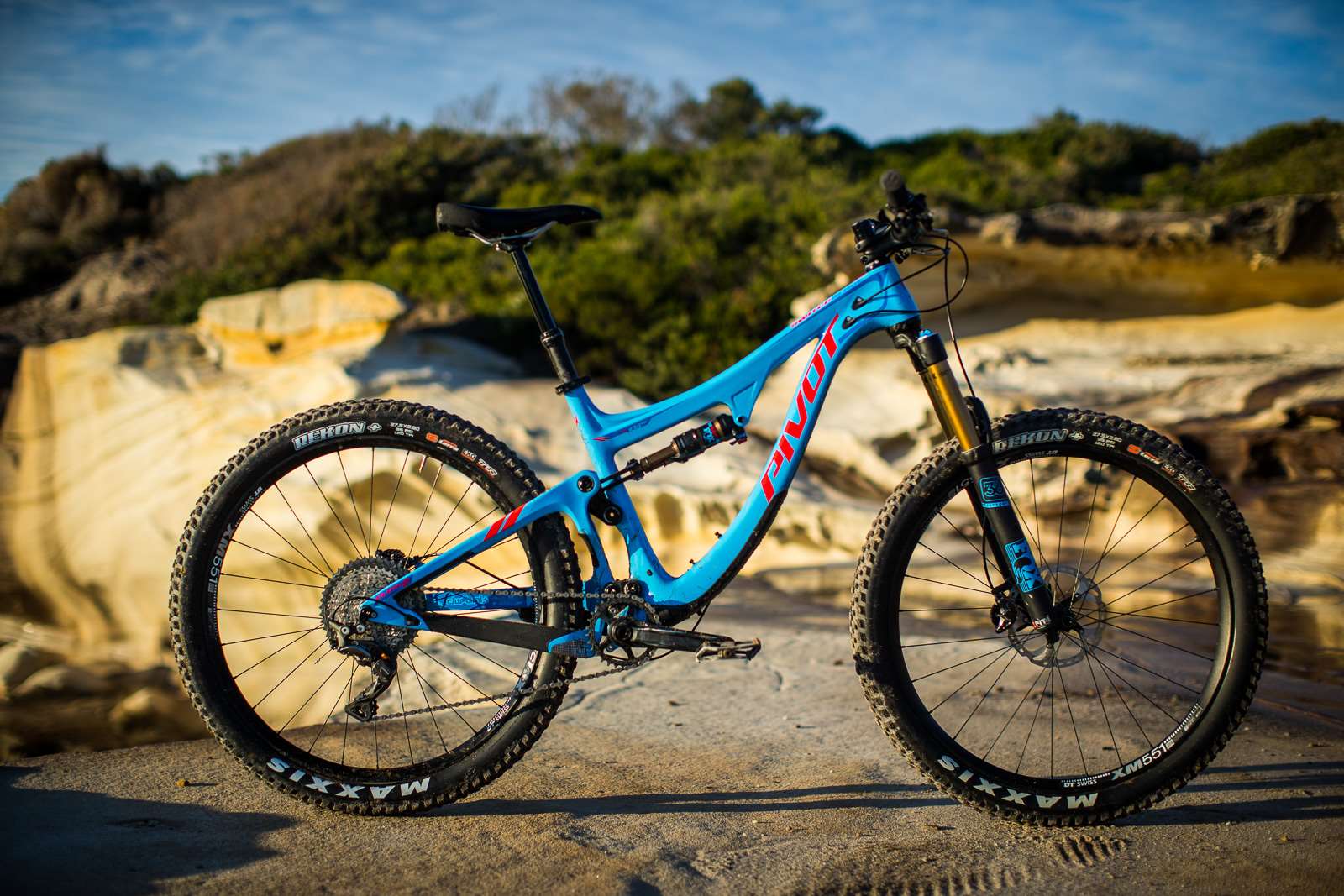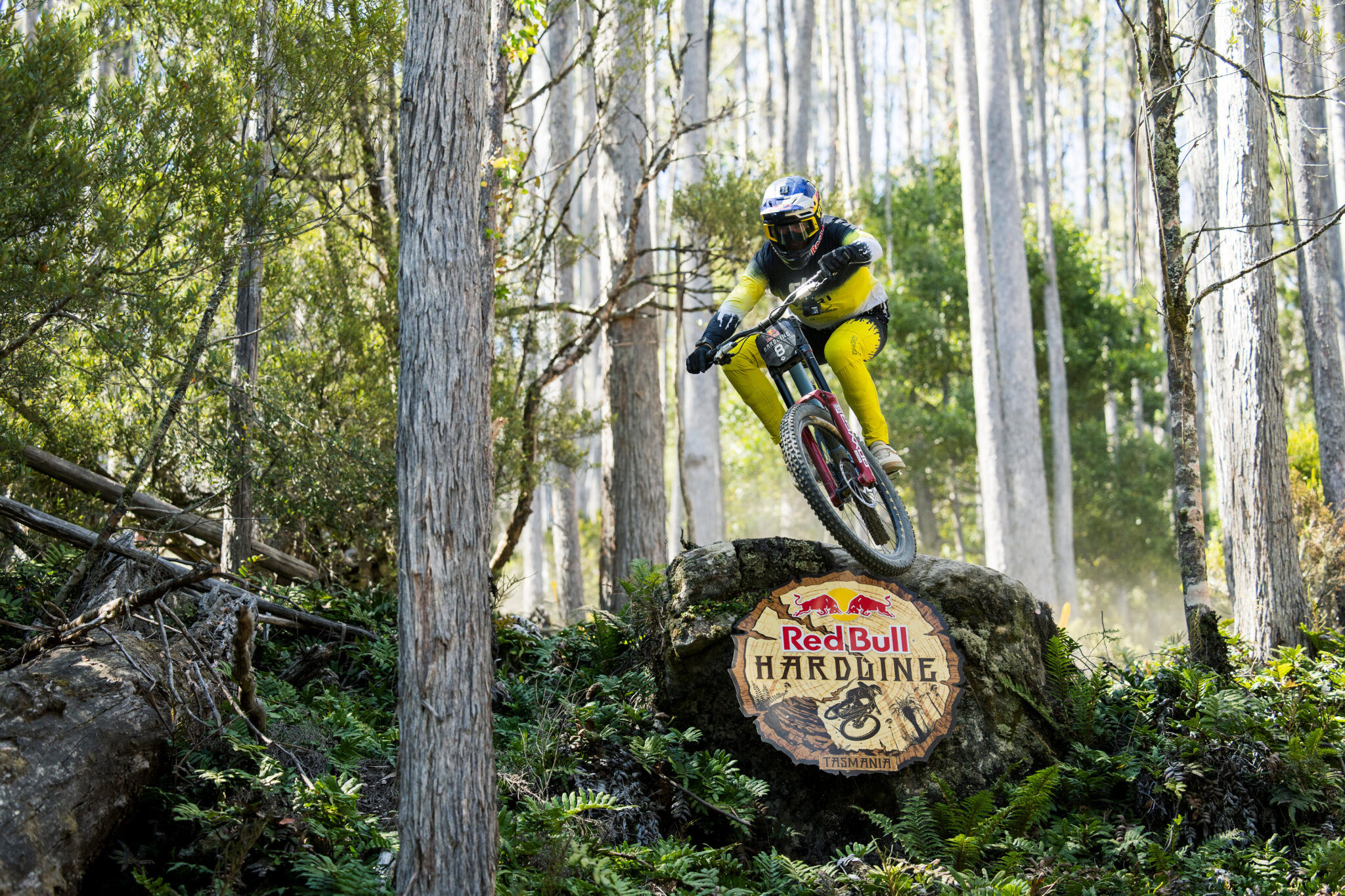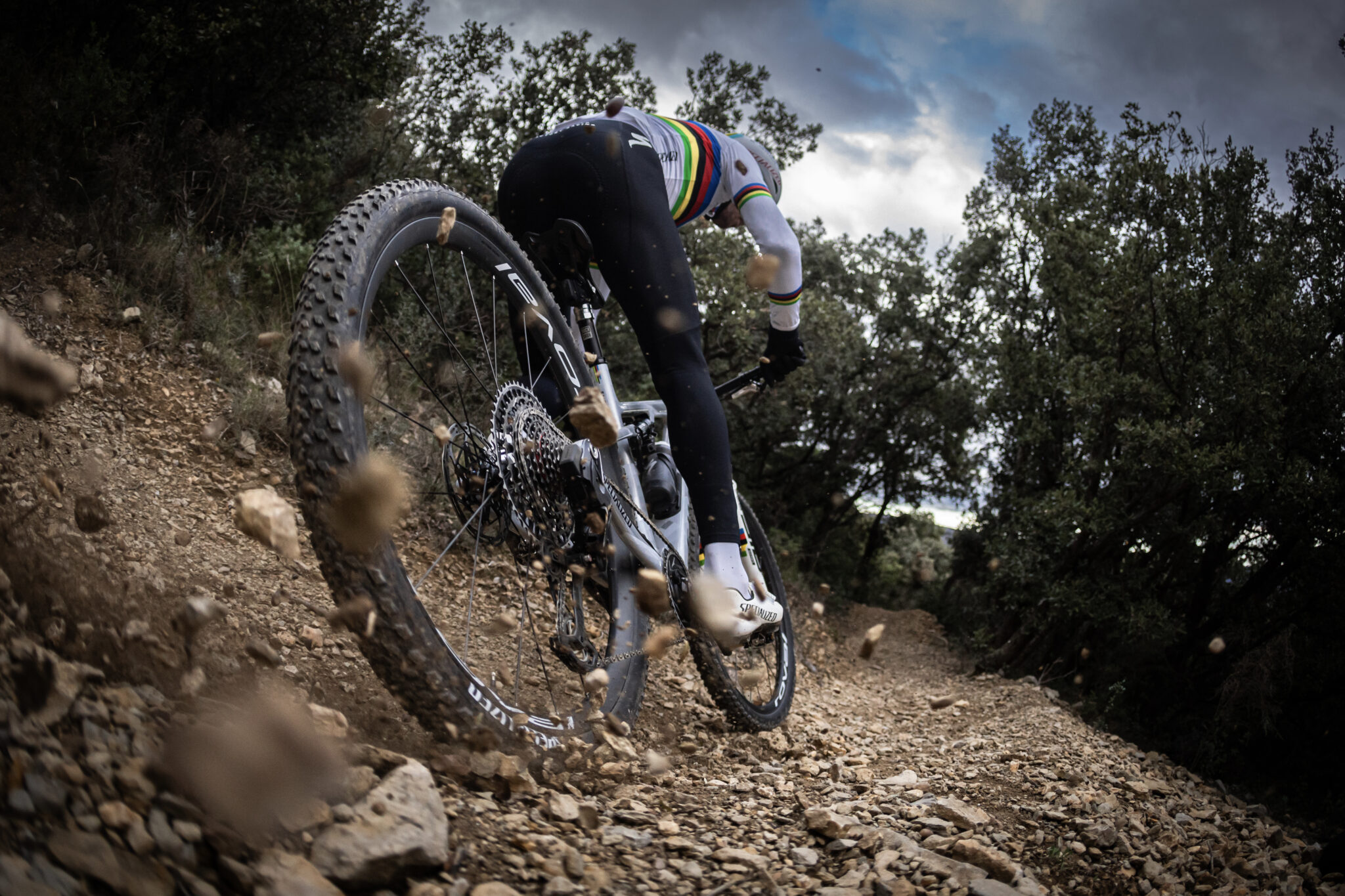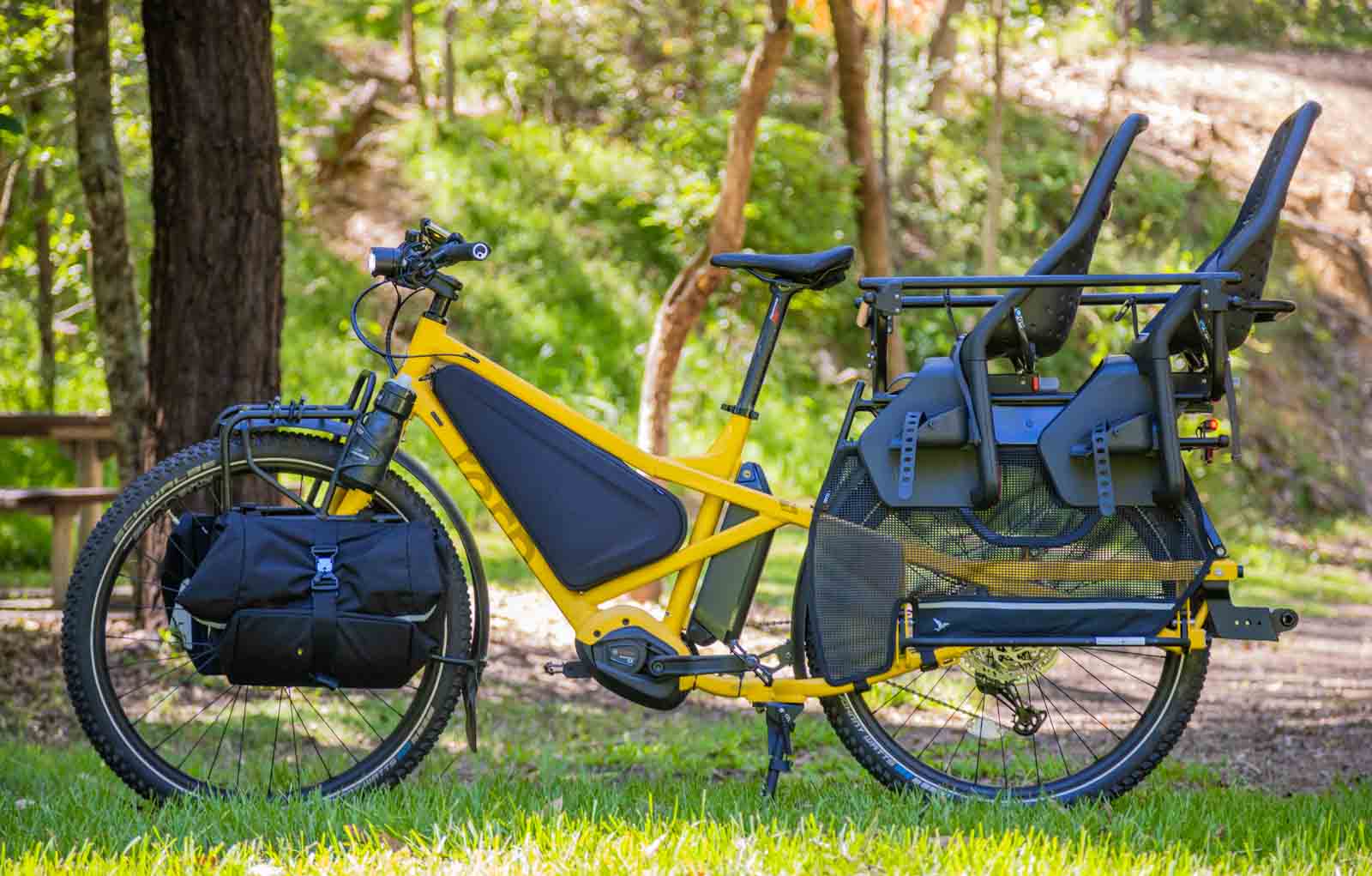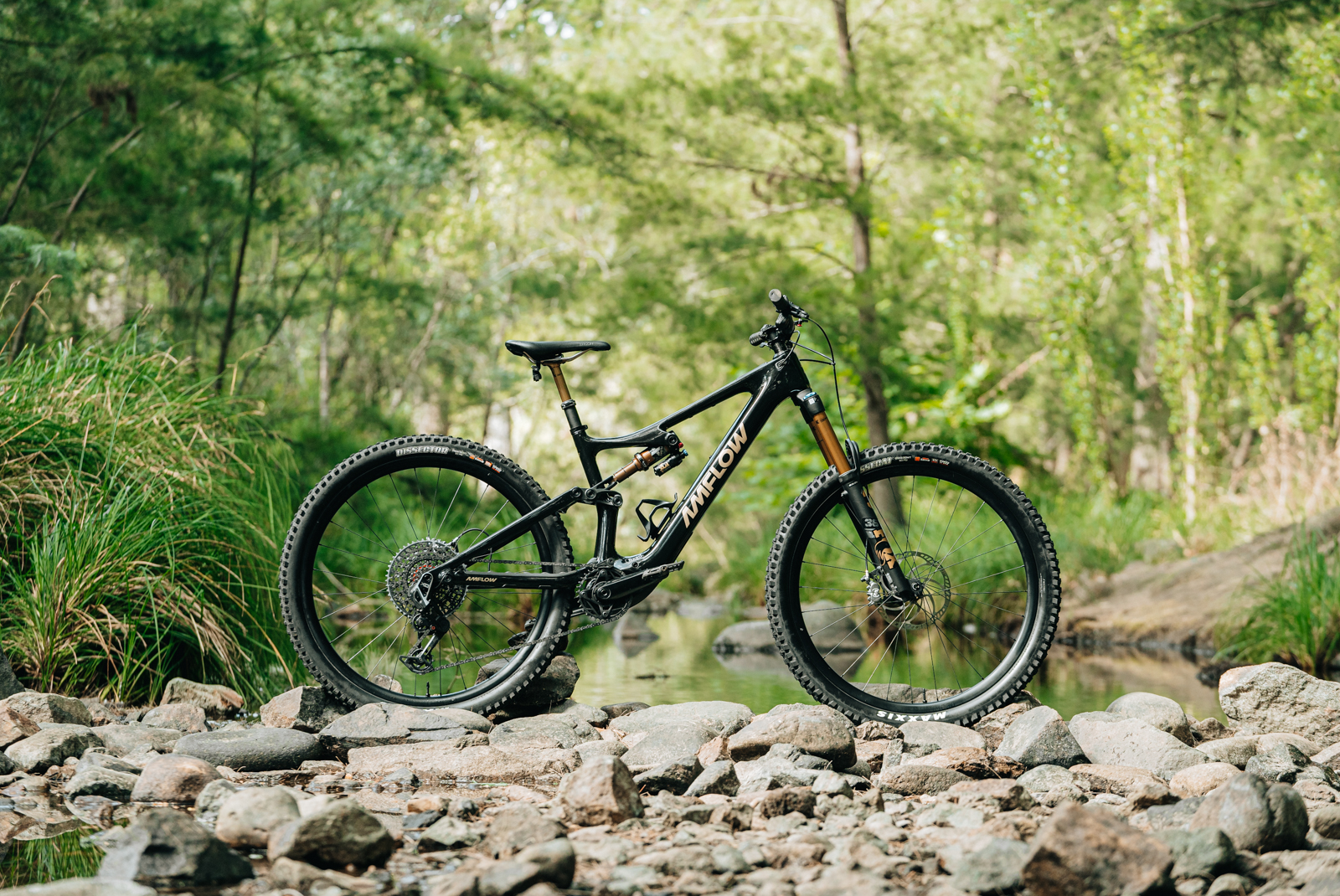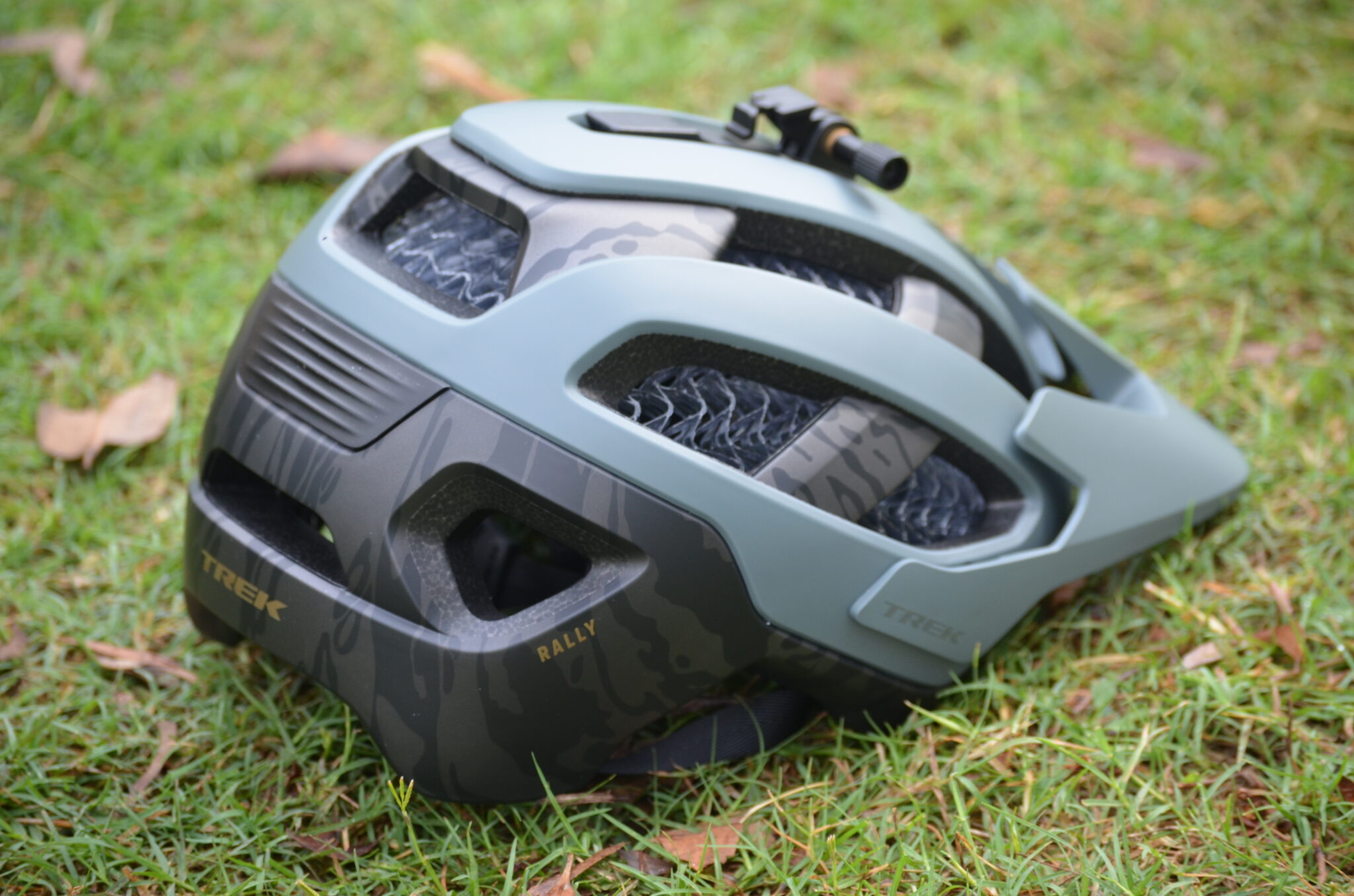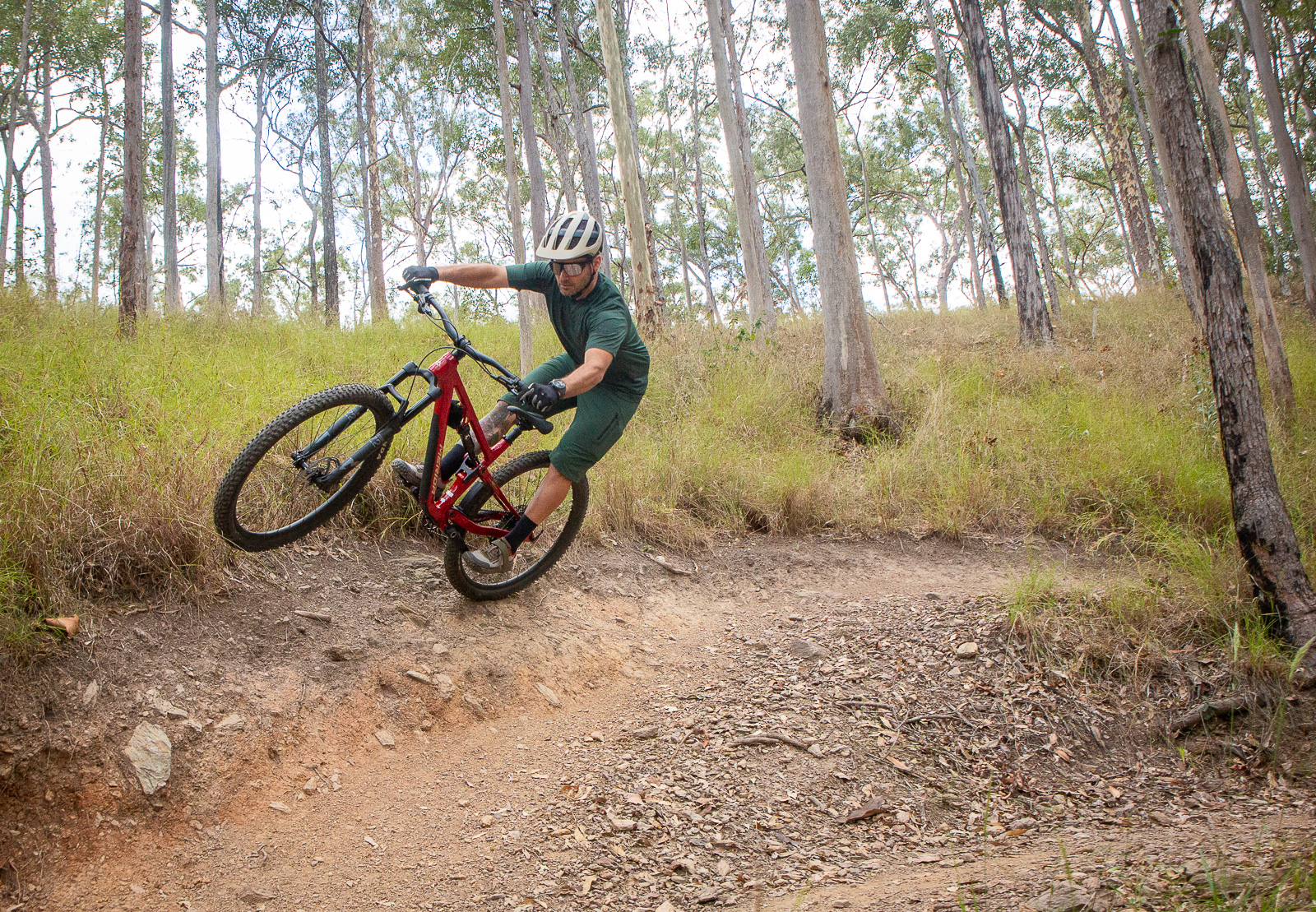TESTED: Pivot Switchblade
Following on from a string of hugely successful and innovative models, Pivot Cycles bring us the Switchblade. Designed from the ground up to accommodate both twenty nine and twenty seven and a half plus wheel platforms.
Words: Adam Macbeth Photos: Tim Bardsley-Smith
The idea
There’s not a lot that is standard about the Switchblade. From the beginning Pivot wanted this bike to do three things – easily accommodate both 29×2.5” and 27.5×3.25” rubber and have the shortest rear end of any bike in its genre. To achieve this they’ve looked beyond the current industry Boost standard of 148x12mm rear ends and worked closely with DT Swiss to create a substantially wider rear wheel. I’m certain they designed the name to poke fun at the Industry but the Switchblade’s ‘Super Boost Plus’ rear end is 157x12mm allowing for a of spoke angle and and a drivetrain that is outboard enough to clear some enormous tyres.
Combining this with their version of the renowned DW Link suspension system (which has been further adapted for the Switchblade) has allowed Pivot to get the rear end length down to a crazy short 428mm, 10mm shorter than any other bike in it’s class. Combine this with 135mm rear travel, a 66.5 degree head angle and a long front end and the Switchblade screams one thing. FUN.
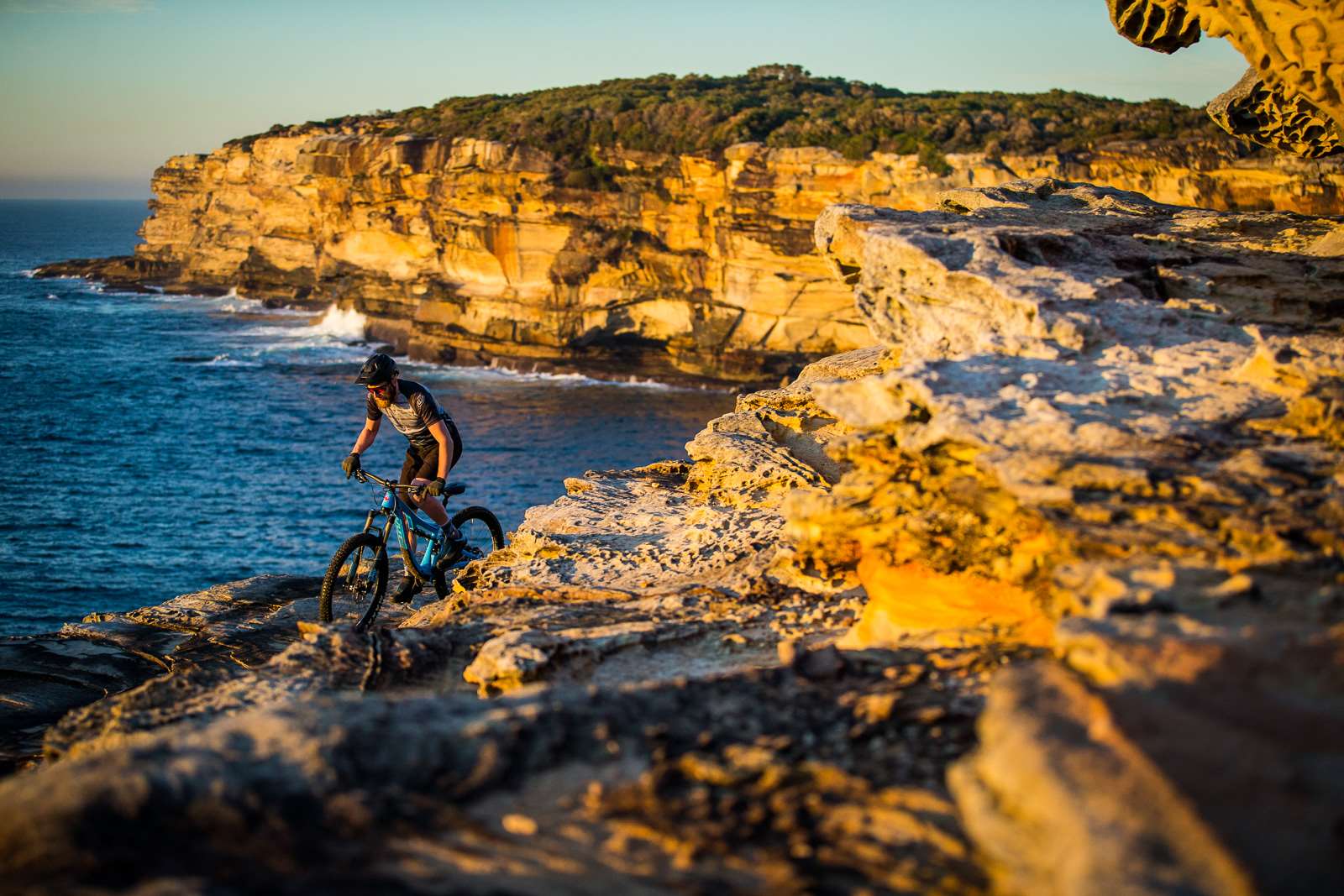
On Paper
As with all Pivot’s upper echelon frames the Switchblade is beautifully finished. These guys have won awards based on their cable routing and it’s easy to see why. Clean, dust free ports for brake and gear cables and hoses, and there are even provisions for internal electronic shifting systems that allow your frame to grow with you as you upgrade.
Our test Switchblade came with Pivot’s Pro build, which is available with either single or double chainrings up front. The drivetrain consists of a Shimano XT 8000 eleven speed shifter, chain and cassette with an XTR rear derailleur. A nice touch is the On Up 45 tooth kit adding a little more gear range. Braking too is taken care of by Shimano's XT stoppers.
“Pivot have really hit the mark with the short rear end on this thing, and the Switchblade is super responsive”
The Pivot's rear shock is the Fox Factory DPS Evol matched with the Boost Factory 36 up front in 150mm though Pivot say a 160mm fork will ride nice too. Just above the fork you’ll notice what looks like a hockey puck, and it’s a spacer for use with 27.5+ wheels to ensure the bottom bracket height is maintained. If you were planning to run your Switchblade with 29er wheels you could remove this.
As stated above, Pivot and DT Swiss worked closely to create their 350 series 157mm rear hub and it (along with the matching 110mm Boost front hub) are laced to their new XM551 rims with a 40mm internal width. Tyres are Maxxis Rekon+ in 27.5×2.8”, tubeless ready with EXO sidewall protection.
Steering is taken care of by Pivot’s house branded bar and stem in 740mm and 60mm respectively, which I felt was maybe slightly narrow for a bike of this capability. The Switchblades that make it to stores will come with Fox’s new Transfer dropper posts but we got ours a little early and it is running a Lev Integra from KS. Our medium test bike hit the scales at 13.4kg
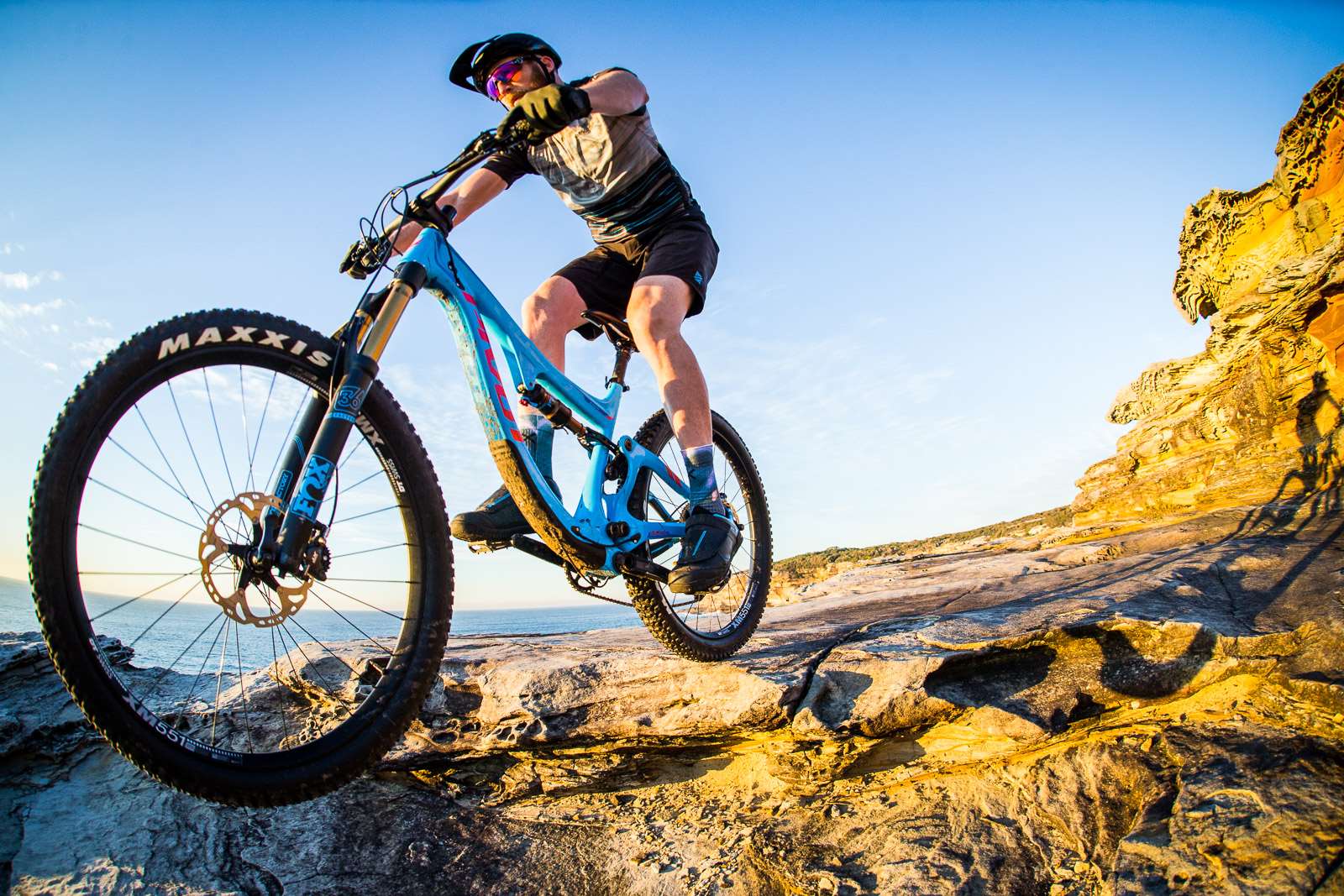
Trail Time
Setting up the suspension on the Switchblade is a piece of cake thanks to the attached sag indicator, and a ten minute carpark roll was enough to tweak the rebound enough to head out.
Having ridden some DW Link bikes previously I started out with the shock wide open, using no pedal platform and cruising up gradual, winding climbs to get warmed up. The Switchblade behaved just like I expected with minimal, if any, pedal feedback. The DW suspension platform is a great candidate for use with the Plus wheel option as it definitely pedals well enough to keep the power on when things get choppy, and having all that rubber to grab onto the trail you find yourself riding out of situations you thought were going to end in some walking and head shaking.
Pivot have really hit the mark with the short rear end on this thing, and the Switchblade is super responsive. Climbing higher into rockier, more technical terrain, minimal rider input is required to negotiate even the most heinous lines. Despite the very slack head angle, lifting the front end, or cornering tightly is done with the agility of a much nimbler bike that the Switchblade would seem on paper. The ability of the Maxxis Rekon+ tyres to maintain climbing traction is pretty nuts. If you are the kind of rider that struggles a bit with body position when climbing the Switchblade will likely smooth a fair bit of that out.
As you’d expect from a bike this slack, with this much travel and traction to match, descending is where the Switchblade really shines. Hitting chunky rock gardens at speed, the DW rear end and supple tyres eat up just about everything, though care does need to be taken to get the balance between tyre pressure and suspension set up just right. Too much tyre pressure and the suspension does all the work, but the tyres can seem a little bouncy. Tyres too soft and you’ll rim out before the suspension even gets a chance to do anything. After getting caried away and smacking the rim a couple of times on the downhills I was able to settle on 16psi rear and 14 front. I have the DT Swiss XM551 rims on one of my personal bikes and can speak to their long term durability. I did feel I could notice a small amount of flex through the rear end, but I was not the first to test this bike and after a bit of a wheel tension that irk was unnoticeable for the remainder of the test.
Given the minimal amount of input that’s necessary to get the Switchblade moving around, manualing through sections, or bunnyhopping them entirely was a piece of cake. One thing that those new to Plus bikes may find a little difficult to get used to is that the Switchblade doesn’t slide around much. Prior to this test I had been riding a bike with 2.4 tyres mounted and entering berms a little tight and letting it drift out into the deep part of the turns is a lot of fun. Not happening on the Switchblade though, as this thing goes where you point it. All the time.
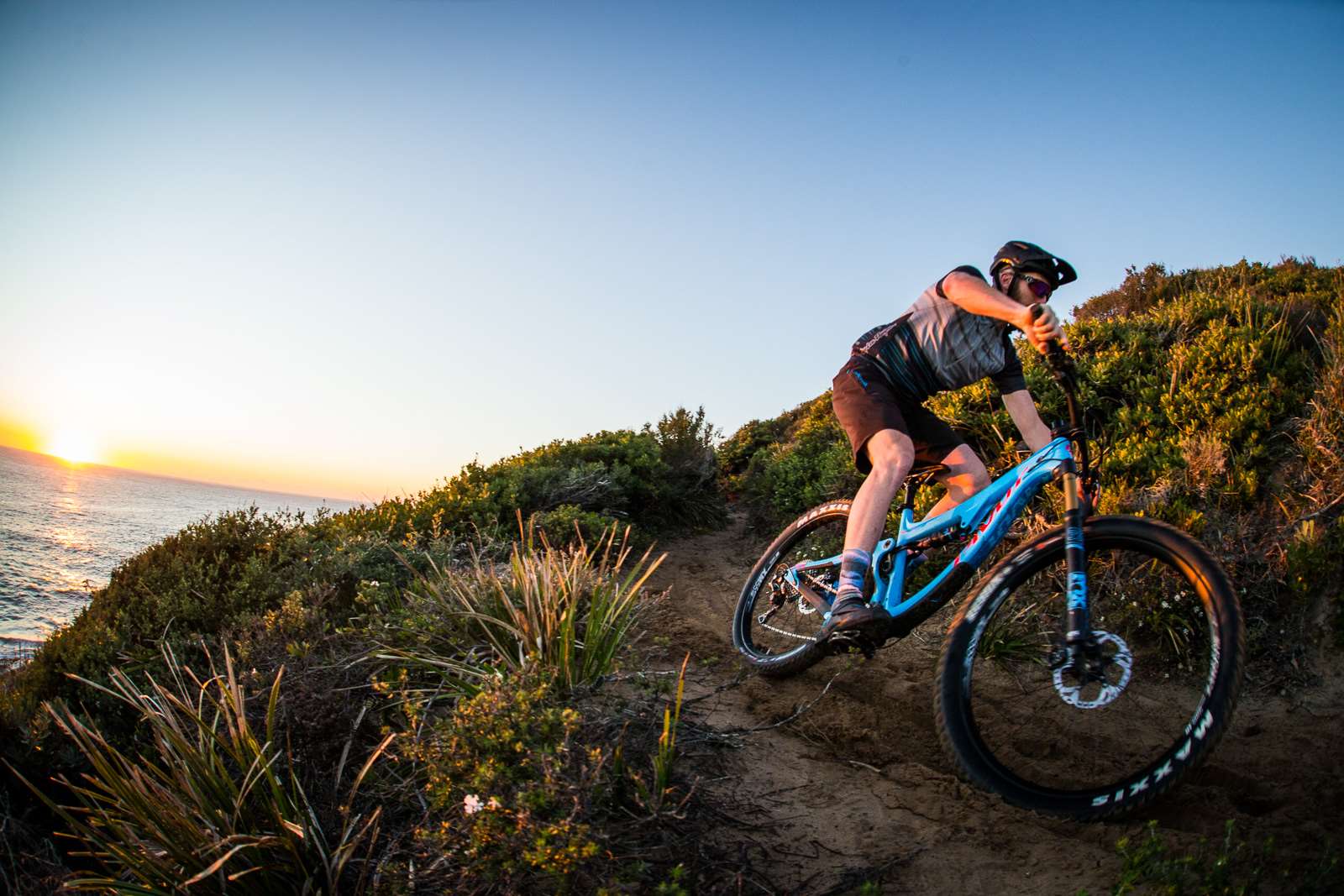
I did feel like the standard 740mm handlebar was very slightly on the narrow side for a bike this capable, but that’s all down to personal preference and mine is for 760mm bars. I’d also really like to have a play with this thing set up with a 160mm fork, though time contraints made that impossible for now. Shifting wise the Shimano drivetrain was faultless throughout though it is worth noting that the One Up 45 tooth kit is designed for use with the 11-40 cassettes, rather than the 42 that comes standard and I did notice the gap between the two lowest gears was negligible. These are all things your Pivot dealer ought to be able to remedy for you quite simply though.
Our Take
Pivot have proved why they have risen to be one of the Big Dogs of mountain bike innovation. The Switchblade is not going to appeal to everyone but it is versatile, extremely capable and quite effortless to ride and the Switchblade Pro 27.5+ should definitely be on your list to check out if you’re looking for a bike to give you that hit of extra confidence and help you grow as a rider.
| BRAND | Pivot |
| MODEL | Switchblade |
| RRP | $9790 |
| WEIGHT | 13.4kg as tested |
| FROM | jetblackproducts.com |
| SIZES |
Available XS, S, M, L, XL |
| FRAME MATERIAL |
Carbon |
| SHOCK |
Fox Float Factory DPS |
| FORK |
Fox 36 Factory 150mm Boost |
| REAR MECH |
Shimano XTR 11sp GS |
| SHIFTER |
Shimano XT 8000 11sp |
| BRAKES |
Shimano XT 8000 |
| CRANKSET |
RaceFace Aeffect SLw/30t ring |
| HANDLEBAR |
Pivot Phoenix carbon 740mm |
| STEM | Phoenix trail enduro |
| SEATPOST | KS Lev Integra tested (Fox transfer full spec) |
| SADDLE | WTB |
| CASSETTE | Shimano XT 11sp 11 – 42 w/ One Up 45 kit |
| WHEELSET | DT Swiss XM series 40mm internal |
| TYRES | Maccis Rekon 27.5×2.8 |

